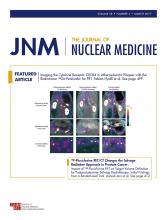TO THE EDITOR: I applaud the authors’ article on the nonvalidity of the linear no-threshold hypothesis (LNTH) and the ongoing folly of its continued reliance for guiding radiation safety and diagnostic imaging dose policies (1). I too have been convinced for some time that the “emperor has no clothes.”
The fallacy of the LNTH also partly, if not significantly, fuels the impetus of the ongoing PET/MR imaging initiative, based in part on avoiding the toxicity of the CT radiation dose attendant to the PET/CT scan (2). This is a misguided cost-ineffective effort of the nuclear medicine industry, in my opinion, attempting to displace more practical and well-established PET/CT imaging protocols costing one-fifth or less as much as the combined equipment and site preparation costs and affording shorter imaging protocols, and with no incremental diagnostic benefit from the use of PET/MR imaging in most cases.
Similarly, an arbitrary guideline from the American Society of Nuclear Cardiology was proposed to limit nuclear cardiology study doses to 9 mSv (3), without any scientific basis behind this recommendation. Such a low patient dose can be achieved only with current technology in the community setting, for the most part, using PET in lieu of SPECT imaging, at increased cost and more limited availability, despite the fact that SPECT affords near-comparable sensitivity and specificity for most patients (4). This is yet another misguided cost-ineffective radiation phobia–driven initiative.
As the authors pointed out in their article, abandonment of the LNTH would likely result in the elimination of many government jobs and significantly reduce the budget of the federal and state regulatory agencies, because the need to oversee and regulate such nonharmful, if not outright beneficial, low-level exposure would evaporate. Unfortunately, it is easy for such regulatory agencies to foment irrational radiophobia concerns on the part of the lay public, contributing to outrage at the suggestion of relaxing such standards.
I sincerely hope that this article will provoke a greater level of engagement by the nuclear medicine community at large, and hopefully by the Society of Nuclear Medicine and Molecular Imaging as well, to abandon the LNTH for guiding our radiation safety and imaging practices, in concert with the consensus of evidence from the literature.
Footnotes
Published online Jan. 26, 2017.
- © 2017 by the Society of Nuclear Medicine and Molecular Imaging.







